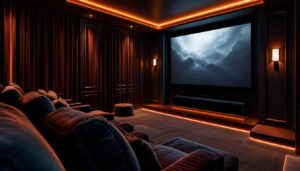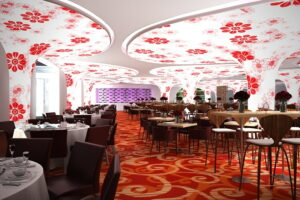At Space Ceiling, we’re always on the lookout for the latest trends in luxury products.
The world of high-end goods is evolving rapidly, with sustainability, personalization, and technology at the forefront.
From stretch ceilings to unique, limited-edition items, luxury brands are redefining what it means to be exclusive and desirable.
Sustainable Luxury: The New Standard in High-End Products
At Space Ceiling, we observe firsthand how eco-conscious practices reshape the luxury industry. Brands now compete not just on design and exclusivity, but on their environmental credentials as well.
Eco-Friendly Materials Take Center Stage
The use of sustainable materials in high-end products has exploded. This shift leads to innovative material choices. Stella McCartney, for instance, uses Mylo (a leather alternative made from mushroom roots) in her luxury handbags. Gucci has introduced Demetra, a plant-based material, in its sneaker line.
Transparency Becomes a Luxury Hallmark
Ethical sourcing and supply chain transparency have become key differentiators. Tiffany & Co. now provides provenance information for every newly sourced, individually registered diamond. This level of transparency sets new standards in the industry. Luxury consumers demand to know the origins of their products.
Circular Economy in Luxury
The concept of a circular economy gains traction in the luxury sector. Brands like Burberry have implemented take-back programs, where customers return used items for recycling. This trend not only extends the lifecycle of luxury products but also appeals to environmentally conscious consumers.
Innovation in Sustainable Luxury
Luxury brands continue to innovate in sustainable practices. Hermès, for example, has developed a mushroom-based leather alternative for its iconic Victoria bag. Meanwhile, LVMH has partnered with Weturn to recycle unsold textiles into new high-quality threads. These initiatives demonstrate the luxury industry’s commitment to reducing waste and finding creative solutions to environmental challenges.
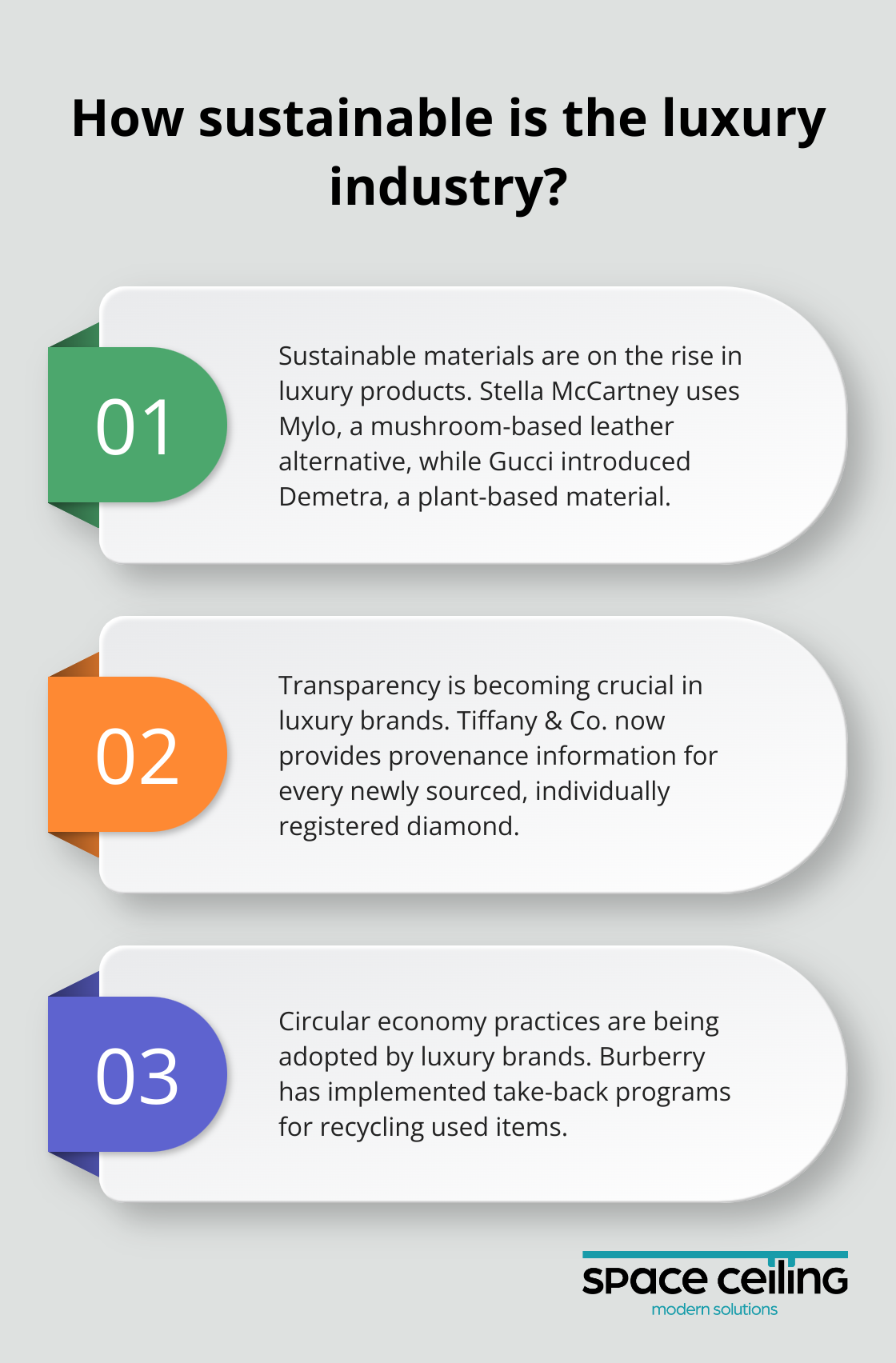
The luxury market undergoes a profound transformation. Sustainability defines true luxury. As we move towards a more responsible industry, the next frontier in luxury products involves personalization and customization, where brands cater to individual preferences while maintaining their commitment to sustainability.
Tailoring Luxury to Individual Tastes
At Space Ceiling, we observe a significant shift in luxury retail towards hyper-personalization. This trend transcends mere customization, creating unique experiences and products that align with individual preferences and lifestyles.
Immersive Bespoke Luxury Experiences
Luxury brands now offer personalized shopping experiences that captivate and engage. Burberry’s social retail store in Shenzhen, China exemplifies this trend. The store connects and rewards customers as they explore online and in store, offering a place of discovery that bridges the digital and physical shopping experience.
AI-Powered Personal Shopping Revolution
Artificial Intelligence transforms how luxury brands interact with their customers. Net-a-Porter’s AI stylist represents an innovative approach to using AI in fashion. This technology aims to revive artisan craft while providing personalized experiences for customers.
The Art of Made-to-Measure Luxury
Custom-made luxury items surge in popularity. Gucci offers made-to-order services for their iconic handbags, allowing customers to select from various materials, colors, and hardware options. In the automotive sector, Rolls-Royce’s Bespoke program enables customers to commission one-of-a-kind vehicles. Each creation is unique, conceptualized to offer something utterly exclusive to the customer.
Virtual Try-On and Augmented Reality
Luxury brands embrace virtual try-on technologies and augmented reality to enhance the personalization experience. These tools allow customers to visualize products in their own space or on themselves before making a purchase. For example, luxury watchmaker Jaeger-LeCoultre offers an AR app that lets customers virtually try on different watch models.
Data-Driven Personalization
Luxury retailers harness the power of data analytics to offer hyper-personalized recommendations and services. By analyzing customer data (including purchase history, browsing behavior, and social media interactions), brands create tailored experiences that anticipate and fulfill individual needs and desires.
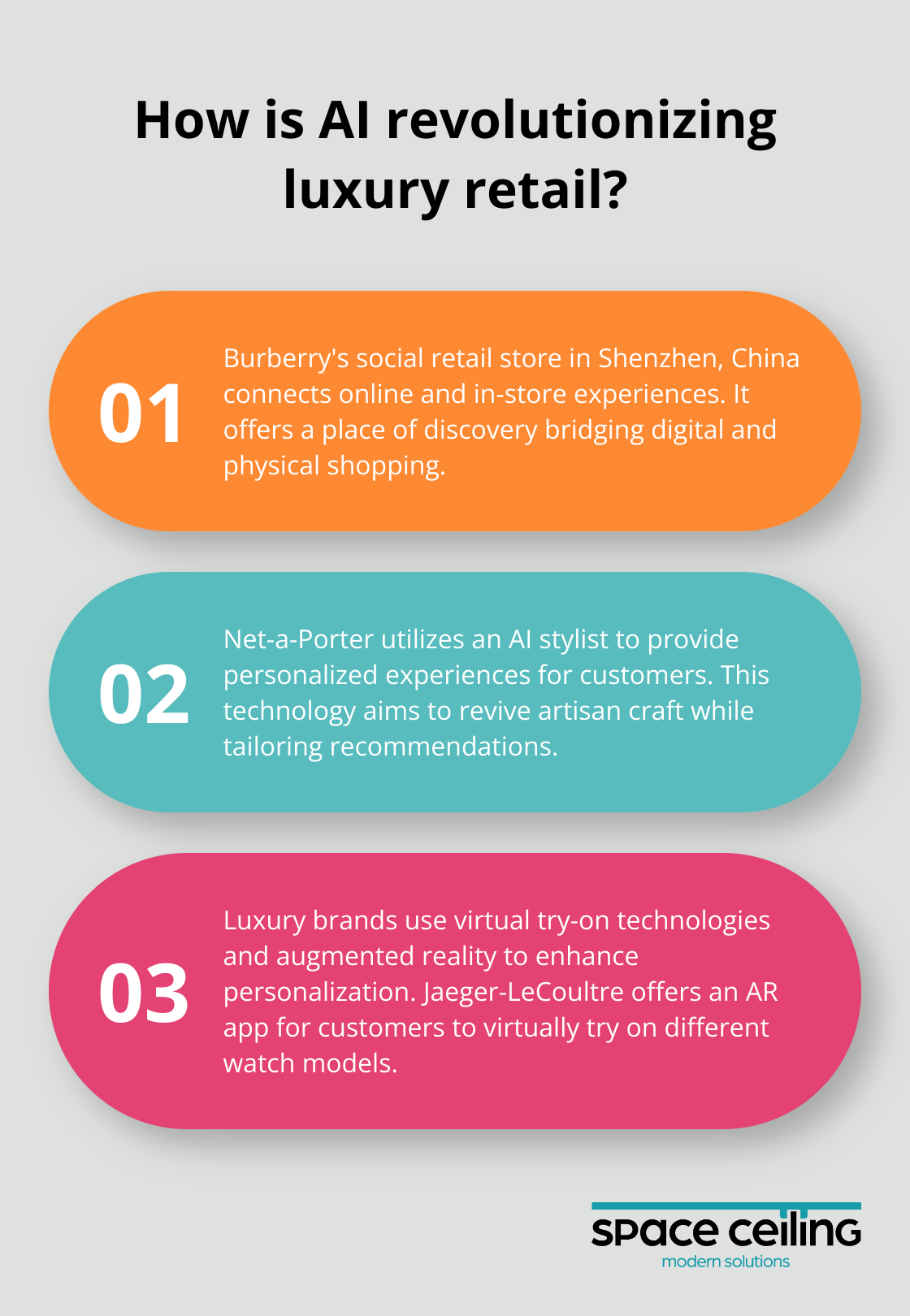
As the luxury industry continues to evolve, the integration of technology with traditional craftsmanship opens new avenues for personalization. This fusion of high-tech solutions and bespoke luxury sets the stage for our next exploration: the rise of tech-infused luxury goods.
The Fusion of Tech and Luxury
At Space Ceiling, we observe a revolutionary blend of cutting-edge technology and opulent luxury. This fusion reshapes the landscape of high-end products, offering unprecedented functionality and exclusivity.
Wearable Luxury Goes Smart
The jewelry industry undergoes a tech-driven transformation. Luxury brands embed advanced technology into their exquisite pieces. The Oura Ring (priced at $299) combines sleek design with health tracking capabilities. It monitors sleep patterns, activity levels, and even predicts illness. Louis Vuitton’s Tambour Horizon smartwatch (starting at $2,450) merges Swiss craftsmanship with digital features like customizable faces and travel apps.
Automotive Luxury Redefined
High-tech features now come standard in luxury vehicles, pushing the boundaries of what’s possible on four wheels. The Mercedes-Benz S-Class (starting at $111,100) showcases this trend with its augmented reality head-up display and standard Blind Spot Assist. Tesla’s Model S Plaid (priced from $129,990) boasts a 17-inch cinematic display and gaming computer with 10 teraflops of processing power, rivaling high-end gaming consoles.
Immersive Luxury Shopping
Augmented and virtual reality revolutionize the luxury retail experience. Gucci’s AR try-on feature allows customers to virtually test sneakers before purchase. Dior’s virtual store replicates its physical boutiques, enabling customers to explore collections in a 3D environment from anywhere in the world. These technologies bridge the gap between online convenience and the tactile experience of in-store shopping.
Smart Home Luxury
The concept of luxury extends to smart home technology. High-end brands integrate AI assistants, automated lighting, and climate control systems into their products. For instance, Lutron’s Palladiom shading system offers precise control over natural light with whisper-quiet motors and elegant design. It’s available as a wired or wire-free, battery-operated system that looks beautiful from every angle. Crestron’s home automation solutions provide seamless control over every aspect of a luxury residence, from entertainment systems to security.
Luxury Tech Accessories
The accessories market sees a surge in tech-infused luxury items. Louis Vuitton’s wireless earphones, created in collaboration with Master & Dynamic, offer premium sound quality in a stylish package. Montblanc’s Augmented Paper combines the traditional feel of writing on paper with digital note-taking capabilities, appealing to tech-savvy professionals who appreciate classic luxury.
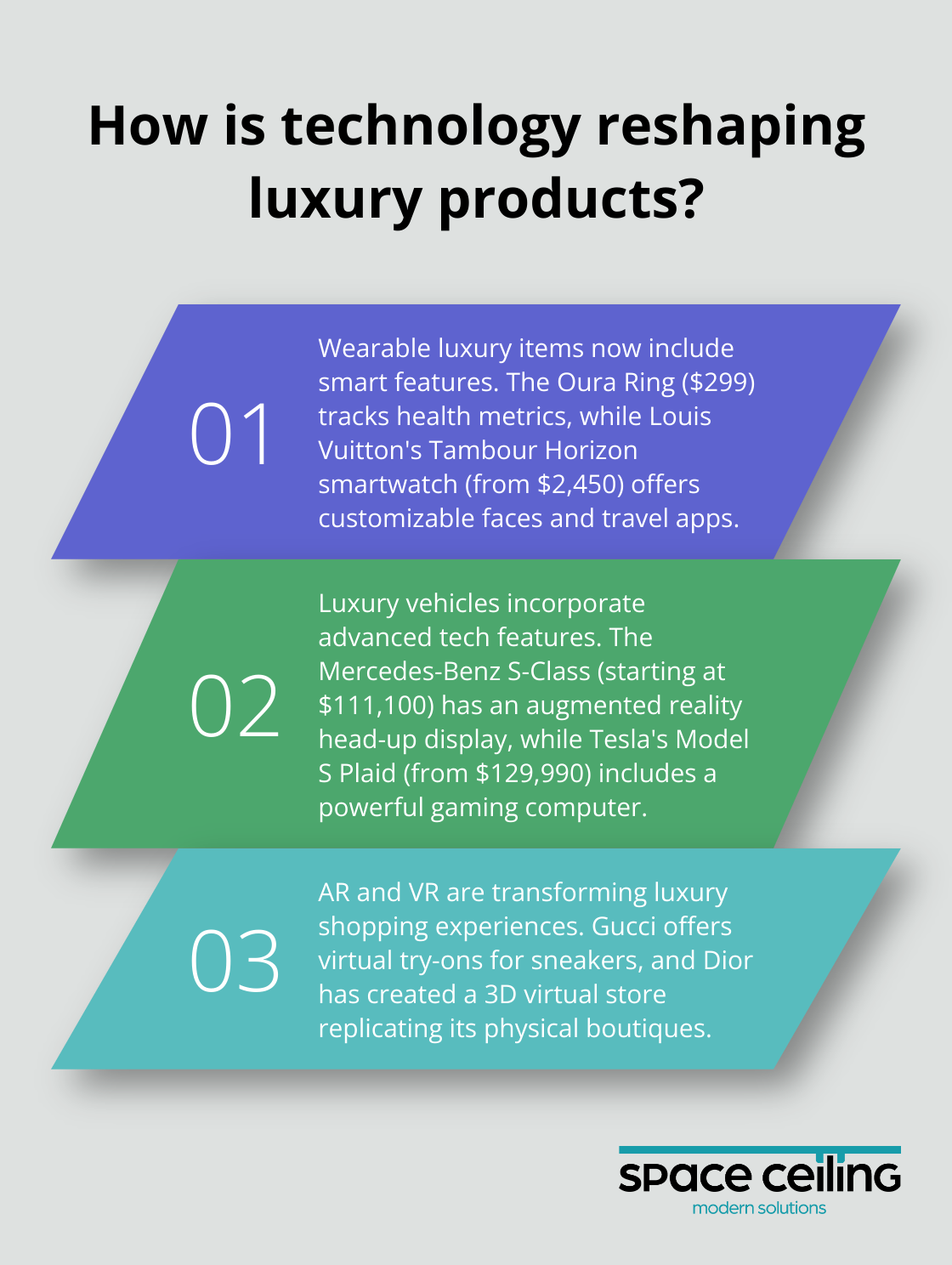
Final Thoughts
The luxury product landscape transforms through sustainability, personalization, and technological innovation. These trends redefine consumer expectations and reshape the meaning of luxury in today’s market. Brands that balance craftsmanship, innovation, and responsibility will lead the way in this evolving industry.
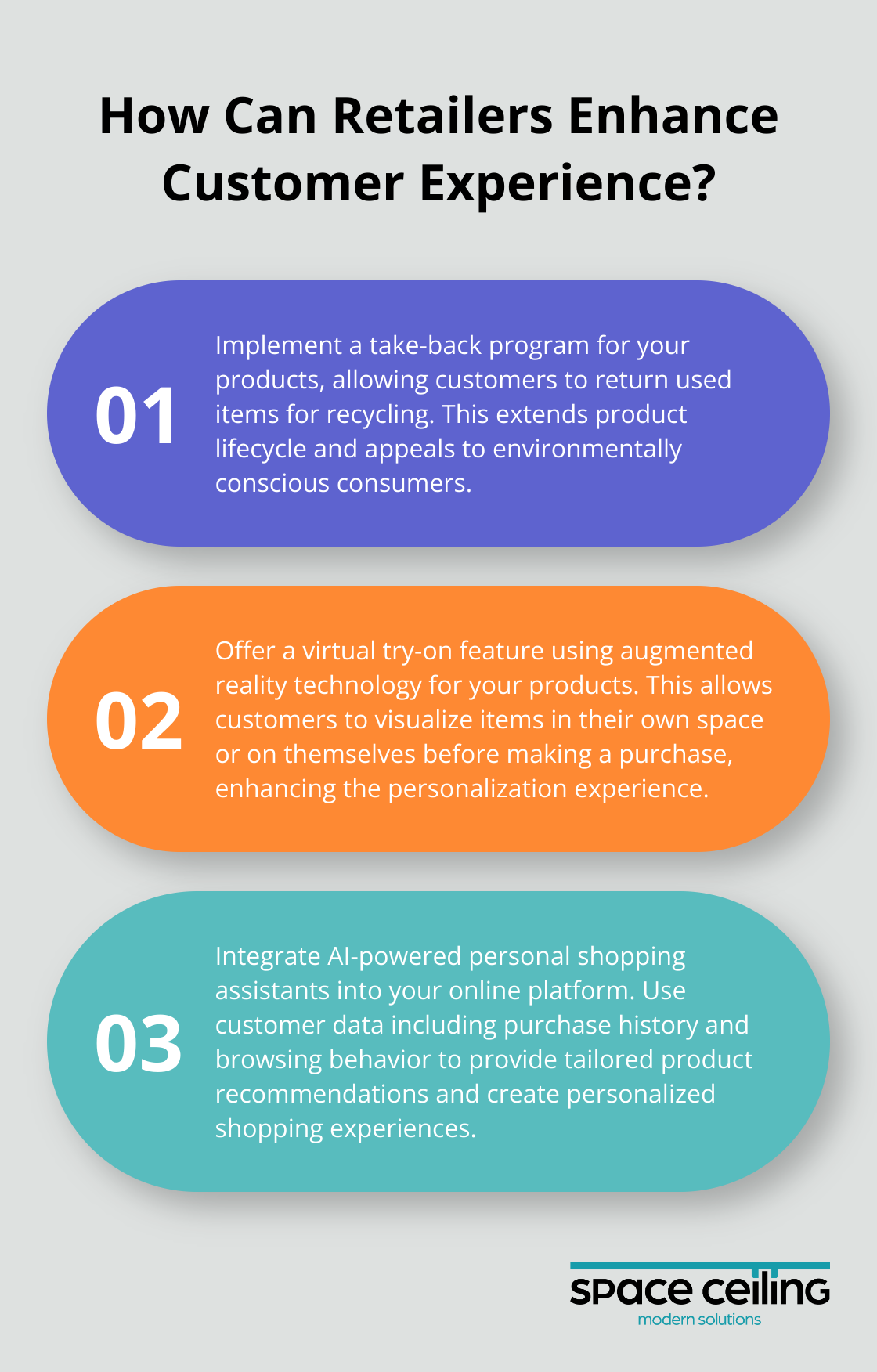
The future of luxury lies in products that exude opulence while aligning with consumers’ values and lifestyles. Tomorrow’s luxury consumers will seek meaningful, personalized, and value-aligned products, not just exclusive or limited editions. This shift presents exciting opportunities for brands to reimagine luxury and create products that resonate on multiple levels with discerning consumers.
At Space Ceiling, we offer unique stretch ceiling solutions that combine elegance, sustainability, and customization. Our products exemplify how modern luxury can blend aesthetics with functionality, creating spaces that are both beautiful and environmentally conscious. We strive to stay at the forefront of this luxury evolution, providing limited products that meet the changing demands of our discerning clientele.
Originally posted on December 24, 2024 @ 10:08 am

